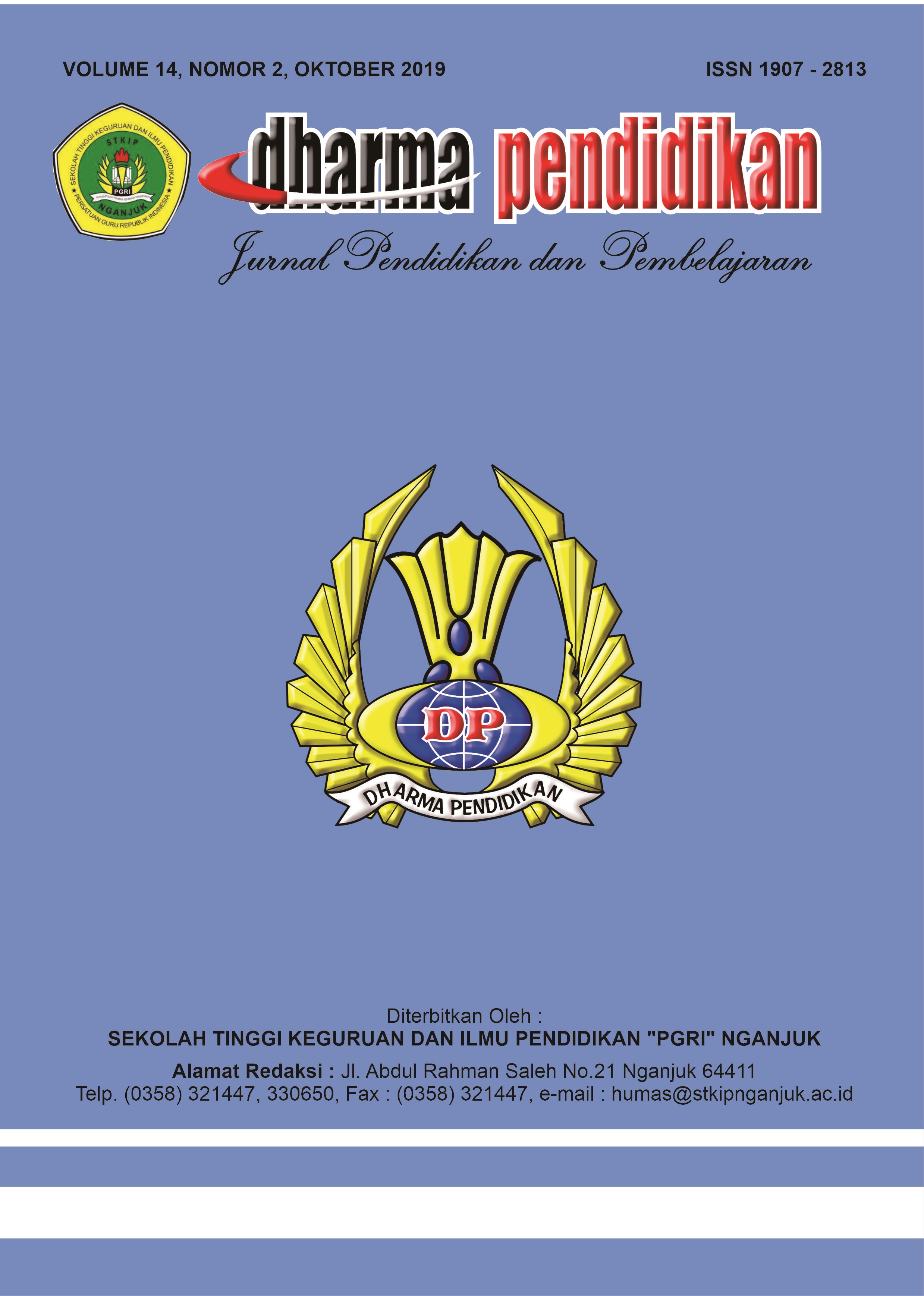The Effectiveness Of Productive Reading Technique For Non English Department Of STKIP PGRI Nganjuk
DOI:
https://doi.org/10.69866/dp.v14i2%20Oktober.7Keywords:
Non English Department, Productive Reading Technique, Reading SkillAbstract
Most of the students form non English Department have difficulties to understand the scientific reading text and served it in verbal based on their understanding. Then, Productive Reading Technique is one of techniques that could improve the students’ critical thinking trough scientific reading text, especially for students’ non English Department. This is the way to prepare the students’ to achieve their understanding in scientific reading text in TOEFL test.
This research designed in experimental way and served as control class and experiment class. Through this research, the students faced some activities that improved their reading skill. The result in pre-test is 54,24 and the students’’ post-test 73,9, even this research is not significant but Productive Reading Technique effective to solve the students’ problem for Non English Department.
Downloads
References
Arikunto, Suharsimi. (2010). Prosedur Penelitian (Edisi Refisi). Jakarta : Rineka Cipta.
Creswell, John, W. (2003). Research Design Quantitative, Qualitative, and Mixed Methods Approaches (Second Edition). United States Of America: Sage Publication.
Rosiana, Caltira. 2015.Developing Supplementary Reading Material to Stimulate the Students’ Critical Thinking for the second grade Junior High School. Journal of English Teaching and Learning: Vol 4 Num 7, page 555-560
Rosiana, Caltira and Sujono. 2018. Productive Reading Technique to Reduce Ineffective readers. National Conference on Language and Language Teaching. Page 76-85
Rosiana, Caltira and Sujono. 2018. An analyses the Students need to Reduce Ineffective Readers Through Scientific Books. Jurnal Dharma Pendidikan. Vol 13 Numb 2 (23-30).
Downloads
Published
How to Cite
Issue
Section
License
Copyright (c) 2021 Caltira Rosiana

This work is licensed under a Creative Commons Attribution-ShareAlike 4.0 International License.
1. Hak cipta atas artikel apa pun dipegang oleh penulisnya.
2. Penulis memberikan jurnal, hak publikasi pertama dengan karya yang dilisensikan secara bersamaan di bawah Lisensi Atribusi Creative Commons yang memungkinkan orang lain untuk membagikan karya dengan pengakuan atas kepenulisan dan publikasi awal karya tersebut dalam jurnal ini.
3. Penulis dapat membuat pengaturan kontrak tambahan yang terpisah untuk distribusi non-eksklusif dari versi jurnal yang diterbitkan dari karya tersebut (misalnya, mempostingnya ke repositori institusional atau menerbitkannya dalam sebuah buku), dengan pengakuan dari publikasi awalnya di jurnal ini.
4. Penulis diizinkan dan didorong untuk memposting karya mereka secara online (misalnya, di repositori institusional atau di situs web mereka) sebelum dan selama proses pengiriman, karena hal itu dapat mengarah pada pertukaran yang produktif, serta kutipan yang lebih awal dan lebih besar dari karya yang diterbitkan.
5. Artikel dan materi terkait yang diterbitkan didistribusikan di bawah Lisensi Internasional Creative Commons Attribution-ShareAlike 4.0









.png)




